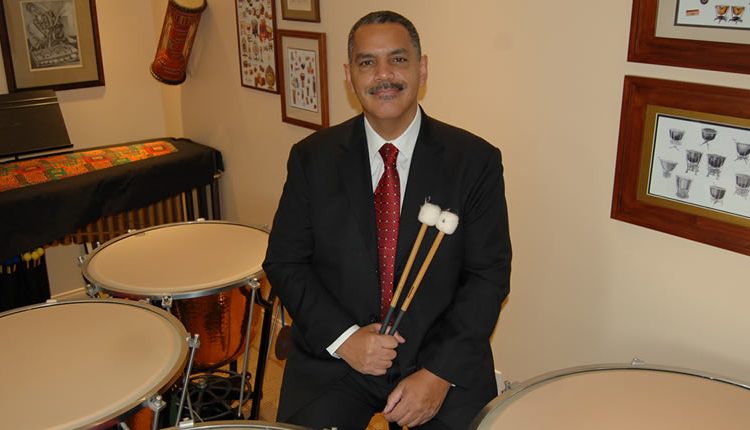Changing A Timpani Head
Raynor Carroll
Equipment
1) New Renaissance Timpani head
2) Rags
3) Tension rod keys
4) Teflon spray/tape
5) Grease lubricant
6) Shims
7) Mute
8) Mallets
9) Ruler or T-square
10) Felt marker
11) Electronic tuner
12) Drum dial
Method
With the old head still in place, mark the counterhoop and a corresponding spot on the bowl. Adjust the fine tuner so that it is midrange. Pedal the pitch of the head down to its lowest point.
Put shims under spider mechanism of Dresden or Berlin style drums, under the pedal of Ludwig, Yamaha or other similar model drums.
Remove tension rods. Remove counterhoop. Remove the old head. Clean inside of bowl with a rag. Clean lip of bowl with a clean rag.
Apply Teflon tape or spray to lip of bowl. Clean the counterhoop with a rag. Clean the remainder of the drum including spider, struts, wheels, etc. Apply lubricant as directed by the manufacturer.
Place new head on the bowl, (I highly recommend Remo’s Renaissance Timpani heads. They’re the best for students, teachers, and professionals.) Line up the markings placed earlier on the counterhoop and bowl. Place counterhoop over the head making sure it is centered correctly. Carefully position the head and counterhoop so that an equal amount of collar is maintained around the drum. Check with T-square or ruler. If necessary, clean and grease tension rods.
Replace tension rods and lightly apply tension in order of 1, 5, 2, 6, 3, 7, 4, 8. Continue applying tension to head by hand turning tension rods. Maintain an even feel of tension. Use keys to bring head up to low playing range. Remove shims.
Pedal the drum up to midrange and check pitch and quality of sound. Place a mute in the middle of the head and check the pitch of each tension rod. Raise the areas that are low. Repeatedly check each tension area and make the necessary adjustments until the head is clear. Use drum dial to check consistency of tension.
Check the playing range. Make sure that the head will obtain a pitch higher than necessary. For example: 32″ – B, 29″ – Eb, 26″ – G, 23″ – B. If not, make adjustments. After final adjustments have been made, leave the drum on the highest note it will obtain so that the head may stretch and seat properly. Over the next few weeks play on the head and continue to make adjustments until the head has settled and stretched.


